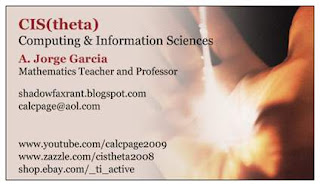
My Linux Classroom 1994-2019
AP Calculus AB/BC 1993-2018
AP CSA/CSAB 1988-2019
Regents Math & Physics 1984-2020
Dear Students,
MAT225 SSII Week 5 Summary!
OK, we made it! You are currently taking your final on our last day of class even as I type! Good luck on the Final!
We tackled Stokes' Theorem and The Divergence Theorem this week. Note that The Divergence Theorem is also known as Gauss' Theorem. You remember Gauss from Physics E&M class and Maxwell's Equations fame, don't you?
These last two theorems are just both of Green's theorems extended from the Plane to Space (2D to 3D).
Taken together, all four of these theorems are known as the:
4 Great Theorems of Multivariate Calculus
and form the capstone to our course using all the tools we've developed all summer:
Vectors, Matrices, Partial Derivatives, 2nd Partials Test, LaGrange Multipiers, Iterated Integrals, Cartesian & Polar Coordinates, Cylindrical & Spherical Coordinates, Line Integrals, Surface Integrals, Gradient Vectors and Gradient Vector Fields, Divergence Functions and Curl Vectors! Holy cow!
Thanx for an awesome Summer Session. I had great fun, I hope you did too. I hope you learned a lot this summer at least! Good luck in all your future endeavors, your majors and your careers. You made it easy for me to come back to Face-To-Face teaching after 5 years of remote teaching over zoom. I will remember you all, fondly. Please have a great, fun and healthy rest of the summer!
Here's a brief summary of what we covered this last week of class:
MULTIVARIATE CALCULUS LECTURES
Flux Integrals In Space & Gauss' Theorem
Work Integrals In Space & Stokes' Thm
GUEST SPEAKERS & DOCUMENTARIES
Admiral Grace Murray Hopper
William Noel of The Walters Museum
Morgan Freeman & The Powers Of 10
CSA Colonel Chris Hadfield
MIT Professor Denis Auroux & TAs
University Of Victoria Professor Trefor Bazzett
Hope you found that helpful!
Well, that's all folks!
Be well,
A. Jorge García
Applied Math, Physics & CompSci
Nassau Community College (1993-)
http://shadowfaxrant.blogspot.com
http://www.youtube.com/calcpage2009
Baldwin High Retired (1984-2020):
Computing Independent Study Facilitator
Continental Mathematics League Advisor
Baldwin High Chess Club Founder
Baldwin High Chess Team Coach:
US Chess Federation Affiliate
National CS Honor Society Advisor:
Grace Hopper NY Chapter
2017 PAEMST NYS Math Nominee:
HTH,
www.patreon.com/calcpage2020
https://www.udemy.com/user/alvar-garcia-fernandez
https://www.ebay.com/usr/sffbclub

2017 NYS Secondary Math PAEMST Nominee

pastebin youtube slideshare
MATH 4H, AP CALC, CSH: SAGECELL
RECOMMENDED AP COMPSCI REVIEW:
FREE TEXTBOOKS
REVIEW BARRONS ONLINE
REVIEW APCENTRAL (exam format)
REVIEW EDX REVIEW MOOC01
====================
